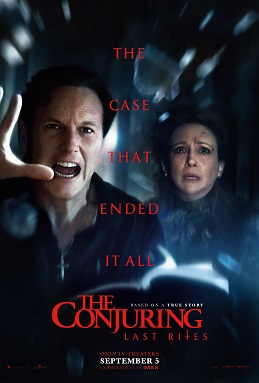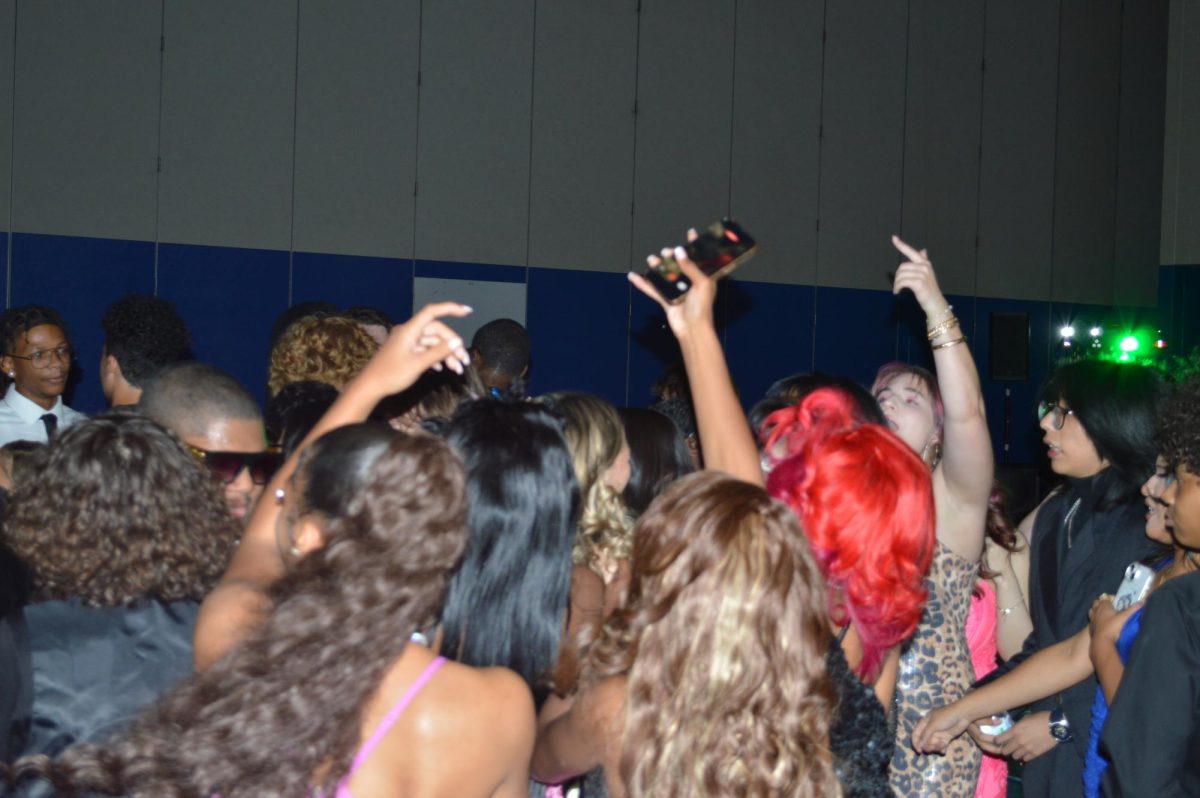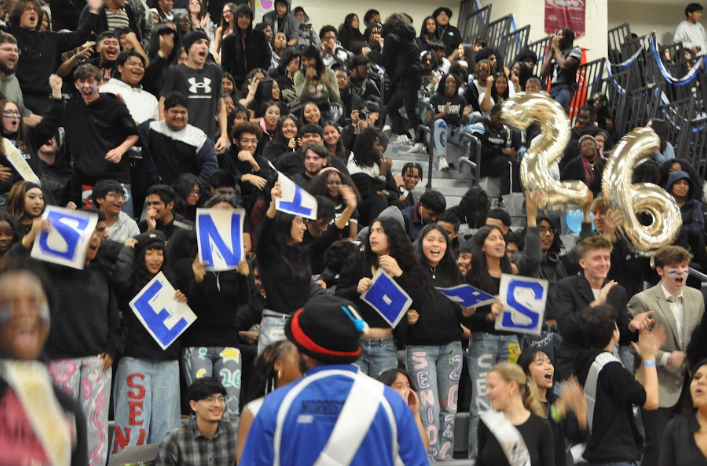As we all clean up the messes of the prior holiday season, the color green is ever-present. We see green in our environment like in the grass and leaves, but the color can also bring items to mind like Christmas trees, garlands, mistletoes, and elves that are shoved away in a corner in the basement just to be brought out the next year. To some, it may even bring back memories of a unique moment in music history that occurred over this summer.
Unless you’ve been living under a rock, you’ve, in some shape or form, come across either a song from or have seen marketing for “Brat,” the critically acclaimed album from British singer Charli XCX. It seemed like you could never escape “Brat”-coded” advertisements. Two distinct features of this whole phenomenon were the iconic narrow Arial font and the unique acid green color displayed wherever the word “Brat” or “Brat” related trends were found.
So what was so iconic about this campaign that people all across the world dubbed last summer: “Brat Summer”? Was it the font or the color of the advertisements that kept people wanting more? Perhaps it was the art itself that touched so many people and made them come together to bring so much attention to this album. Maybe it was Charli XCX herself that caused this ginormous wave of awe to fill the masses and take over social media. I believe that it was a combination of all these components put together that made this album’s campaign so legendary that even then Vice-President Kamala Harris joined in on the trend using “Brat”-themed advertisements in her election campaign.
Charli XCX has definitely changed the way people will now approach marketing for their upcoming musical projects, but has this popularity inadvertently ruined the message of this album and her artistry? To understand how too much media has desecrated the album’s theme and Charli’s brand, we must first understand her rise to popularity, the underlying message Charli’s project tries to convey, and how it has been warped by too much attention that disregards the soul of her artistry.
Charli’s success can largely be attributed to her authentic approaches regarding her music as well as who she is as a brand. Her embrace of digital culture to engage directly with her fans has allowed her to stay ahead of trends and promote her upcoming works in a readily accessible way; like when she posted about the infamous “Brat” wall” on her Instagram stories, which relayed different messages and signaled the upcoming arrival of her sixth studio album. Charli has made a community around her music by creating a sense of intimacy between her and the audience through sharing rough demos as well as behind-the-scenes content, which keeps her fans active in her musical journey. Another example of this is when the Apple songstress came out with the “Brat Generator” which allowed fans to participate and join in on the fun of the “Brat”-iness filling the summer by allowing them to generate all sorts of messages in the style of the album.
From a young age, Charli XCX was creating music and working hard to promote her art through her Myspace account. Her parents supported her so wholeheartedly to the point where they took her to DJ an illegal rave when she was 14 years old. She shot to widespread fame with her feature on the smash hit “I Love It,” by Icona Pop well before becoming a pop icon herself. Charli is the epitome of that versatility; she combines mainstream pop sensibilities with an experimental, futuristic sensibility alongside the likes of producers such as SOPHIE, A.G. Cook, and other members of the PC Music collective she sometimes collaborates with. Her critical acclaim, as well as her established fanbase, comes from her infectious hooks and the way she challenges the boundaries of her genre. With her dynamic stage presence and fearless fashion, Charli continues to reinvent her sound — that’s what makes her one of the most trailblazing artists in contemporary pop music.
She deserves the recognition and attention she is receiving now, but there is something that feels off about it all. Charli began her career as a lesser-known artist who was loved and worshipped by her fans and she gradually grew bigger, but as big as names like Beyonce or Taylor Swift. There was an aura about her that flowed with edge and deficiency that clashed with mainstream pop that filled every radio station.
The album “Brat” is all about embracing that rebellious, bold, and unapologetically you confidence. Her music and persona often celebrate challenging the norm and embracing one’s quirks and imperfections. Charli XCX showcases different forms of herself like her vulnerability in her song “Sympathy is a Knife” where she expresses her insecurities about a woman she could never relate to or ever achieve to be like. And in the song, “Everything is Romantic” she explores the idealization of love and how it makes it harder to create genuine connections. Contrasting this contemplative aspect of the album are songs like “365” which is a song all about being messy and living that party girl life without caring what people think and “360” which captures the essence of being a figure in today’s digital age and celebrates those who have shaped pop culture through their unique selves. “Brat” is not about being immature or insensitive like many have said, but rather it’s all about living authentically and denying people the comfort of conforming to societal expectations.
The problem that arises through this mass attention on her is that it creates the space for people who don’t understand the theme of Charli’s music just to use its popularity to benefit themselves. We saw it with “Brat”-wurst sausages, ritz crackers, and even the government of New Jersey using the marketing for heat advisories. But like all good things, the oversaturation of the “Brat” Aesthetic sapped the fun out of the trend as well as just neglected what it meant to be “Brat”. Every other reel or TikTok you scrolled through was a video of people doing the “apple dance”, lip-syncing to lyrics that most people did not truly understand, or insufferable company ads trying to join the trend. It felt like being fed acid-green juice through an IV, it was irate. It may also be for the fact that mass corporations try to take advantage of an album that is defiant of being complacent which is ironic seeing as how our capitalistic society forces so many people to work through unlivable wages and apathetic working conditions.
When Charli XCX was a smaller artist, her art was given the care and respect it deserved by her loyal fans, but now it’s just used for its popularity and as a way for people to make themselves seem edgy. I was scrolling on Instagram where I saw people at one of her concerts not know a single song that wasn’t one of the popular ones off of the “Brat” album. In that instance, it became apparent to me just how much people didn’t take the time to learn about Charli’s other music and her as an artist. This shows that when you become so popular you’re no longer wanted for who you are as a person or your work, but how your image can be exploited for someone else’s ambition be it to boost someone’s image or bring in customers.
Her music throughout her career has contrasted with music that fills popular radio and media because of its sincerity and explicitness. It often pushes the limits of traditional genre and songwriting which may be problematic to some. In her most recent album, she frequently references drug use and compliments her lyrics with a variety of words looked down upon by popular media. It is possible her music has been influenced to be more commercially viable, but personally, I don’t feel this is the case. Some of her earlier music may have been easier to digest than her more recent songs. Her previous album, “CRASH,” was infectious and catchy, most of the songs on that album felt more like mainstream pop songs, whereas songs in “Brat” had heavy production that is very significant in club music and showcased Charli’s more experimental tendencies that are not present in pop music. This reflects upon societies’ tendency to force people into making themselves a brand to be popular for no apparent reason as we’ve seen with different celebrities like Sabrina Carpenter or Chappell Roan. They’re two extremely talented women who didn’t get the attention they deserved because of how they branded themselves, but now with the changes in their approach, they both have seen mass success. But in this industry, people are constantly having to reinvent themselves again and again so society can get something fresh or more marketable to sell more products all at the expense of the artists.
The story of Charli’s marketing has shown how too much media can be damaging and one’s artistry should not come second to media attention or money. However, this spotlight has allowed the DJ to reach new audiences, many of whom enjoy the art Charli devoted so much time to. How much of that spotlight was overall beneficial is up for debate, but I can say that this album is definitely one of my favorite albums of 2024, and if you’re interested, I’d recommend diving into the art of Charli XCX.

The Warped Image of ‘Brat:’ Is Too Much Media The Problem?
February 14, 2025
Story continues below advertisement



















